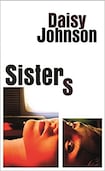
Daisy Johnson’s dazzling 2018 debut, Everything Under, made her the youngest author to have been shortlisted for the Booker in the history of the prize. This compelling adaptation of the Oedipus story explored utterly modern anxieties about dementia, dysfunctional parenting and crises of gender identity in a style that effortlessly blended classical myth with supernatural horror.
In Johnson’s fiction, dreams and fantasies are related as vividly as real events, and often seem to tell us more about characters’ emotional lives. Her latest novel, Sisters, is in many respects a more moving and more refined work, exhibiting the author’s facility for painting the contemporary world using a Gothic palette while paring back the propensity towards merely gratuitous strangeness or obscurity.
Sisters follows the lives of July, September and their mother, Sheela, as they move from their Oxford home to a semi-dilapidated house on the North York Moors in the aftermath of a traumatic episode at school, precipitated by a compromising picture of one of the girls being shared among the pupils.
What is supposed to be a fresh start rapidly sours as Sheela’s chronic depression returns with a vengeance and the house seems to stir into life, emitting obscure noises, harbouring unseen creatures and destabilising the line between waking and dreaming. The relationship between the sisters begins to undergo an alarming metamorphosis as dark memories from their childhood rise to the surface.
As her previous retelling of the Oedipus myth makes plain, Johnson is fascinated by the intense passions that ferment within family life. The sisters are uncannily close, seeming able to hear each other’s thoughts and translate grunts or minute gestures into nuanced observations and sentiments. Even more unsettling is the novel’s insistence on the children’s proclivity for cruelty and violence, their relish for inflicting pain and humiliation.
July is enchanted by September but also comes to recognise the extent to which her own needs and desires – and even sense of self – are subordinated to her sister’s, as September jealously sabotages July’s relationships with everyone other than her, including the girls’ own mother. Particularly disturbing are the games of “September Says”, as she manipulatively exploits her July’s craving for affection in a dynamic explicitly likened to the coercive relationship between the sisters’ mother and father.
Bodily functions
If Everything Under had a fault, it was a tendency to overdo the representation of thoughts and feelings as bodily functions, originating more in the viscera than in the head, leaving the prose at times sounding overwrought, verging on the melodramatic.
The stress on the corporeal is no less conspicuous in Sisters: alarm grows in the bone marrow and travels up the throat, hunger makes the skeleton rub painfully against the joints, sexual desire is felt in the muscles and skin, tiredness is like having a corpse draped around the shoulders, and on the list goes.
Here these moments of descriptive extravagance, far from seeming gratuitous, work brilliantly to chart intensities of emotional experience, conveying the rawness of childhood, the turbulence of teenage passion, the anaesthetising paralysis of depression and the claustrophobic oppressiveness of grief in ways that are never less than entirely convincing.
If the monstrous strangeness and lurking menace of Everything Under sometimes sound contrived, readers are made to feel that the story of Sisters simply could not have been adequately told any other way. Johnson also seems to have become more confident in the pacing of her narrative, dwelling on apparently minor scenes and trusting to the taut and richly suggestive prose to hold the reader’s interest.
Finely crafted
The result is a simpler and more finely crafted novel that displays Johnson’s gifts in the very best light. A section narrating the history of the North York Moors house, inevitably inviting comparison with the “Time Passes” section of Virginia Woolf’s To the Lighthouse, is a triumph. No less masterful is the way the epigraphs are made to reverberate through the prose with increasing prominence, gathering up the force of a poetic refrain as the novel approaches its devastating conclusion.
Yet, for all its warping of time and space and its unbridled flights of lyricism, Sisters demonstrates Johnson’s mature instinct for knowing when a novel needs to elaborate and when it needs to hold back. The haunting directness and simplicity of the final lines are nearly unrivalled in contemporary prose, keeping company with Kazuo Ishiguro or JM Coetzee at their best.
Sisters is a small but perfectly formed novel. Readers put off by Johnson’s promising but imperfect 2016 collection, Fen, or the magical realist tendencies of Everything Under would do well to give her a second chance. In Sisters, Johnson’s predilection for the abject, the monstrous and the ominous are marshalled to real purpose, revealing a writer whose precocious talents seem bound only to increase with every new work.
Doug Battersby is a research fellow in English literature at the University of Bristol










